August 14 Day 10 – Bourg and Cognac
Our free choice today was to enjoy a tasting at the acclaimed property of Rémy Martin.
Then spend the rest of the day exploring the fortified town of Cognac, renowned for its production of fine brandy. Unfortunately we did not discover the Carriage Museum in the enchanting Bourg Castle which included a visit to the 16th century passageway to the guards rooms and immense WWII oil tanks.
______
Yep, you guessed it, missed our morning exercises – 😞 already day 10. We had to be up early again for our full day excursion to Cognac. The bus left at 8:15 – another opportunity for a morning nap since its about 1 1/2 hour journey. After the tour of Remy Martin we were off to Cognac where we toured the historical area and went for lunch at Restaurant La Courtine on the banks of the Charente River – excellent food! After lunch it was back to the shops to pick up more treasures before heading back to Bourg. Good thing a couple of people might have had a snooze on the way back because as soon as Karen and I put our things away we dashed off for a whirlwind tour of Bourg.
We had the sad horrible ‘disembarkation briefing’ at 6:30 so we don’t have to go through it on our last night which is tomorrow. We also have the Captain’s Farewell Gala Dinner tonight so tomorrow we can get our packing done and not feel like its interfering with our relaxing! Especially since we are the 4 people out of 6 (the other two being Bo and Karen) that have to be up at 3:00 am to leave for the airport by 3:30 on August 16.
So after dinner tonight we’ll have external Entertainment with Christopher Maroye, then Live music with Dani. Yahoo.
______
On the way to Cognac:
____
Remy Martin:
“The origins of Louis XIII cognac began with the founding of the House in the Cognac region in the early 1700s. In 1841, after more than a century of producing cognac, Paul-Emile Rémy Martin assumed control of the business and began selling the House’s cognacs under the family name.
He broke from tradition and began bottling his cognacs rather than continuing to sell them by the barrel. In 1874, he began selling a blend of his best 100% Grande Champagne cognacs in an ornate decanter. While originally designated “Grande Champagne Very Old – Age Unknown,” this particular blend and its decanter later became known as Louis XIII.
Louis XIII cognac is produced in the Grande Champagne region of Cognac, from the growing of the grapes to the distillation and aging of the eaux-de-vie. The final blend is composed of up to 1,200 individual eaux-de-vie from Grande Champagne vineyards, ranging from at least 40 years to 100 years in age.
We actually went into one of the buildings with aging casks of cognac. What a smell – light no matches!
______
______
Cognac is the center of vineyard country where the grapes grown make an unpalatable wine but that wine is distilled into great brandy. Medieval Cognac is an area of narrow cobbled streets, hemmed in by attractive houses from the 15th to 18th centuries.
Pont de Saint Jacques: The bridge over Charente river was built from 1848 to 1851 to replace a medieval bridge located off the Porte of Saint-Jacques and renovated in 1994. Originally named Pont Neuf it is now Pont de Saint Jacques.
Porte of Saint-Jacques two machicolated towers were part of the medieval ramparts. This gate was one of three gates in the city wall. The first towers from the 12th century were square, and replaced around 1500 with round towers. The medieval bridge which went to this gate was destroyed in 1855 (the new bridge being completed in 1850). After the revolution, the towers became a prison from 1789 until 1860. During the nineteenth century renovations were done at various times. Each tower has two vaulted semicircular vaulted halls. The terrace is paved with stones. The gargoyles added a carved decoration.
Château of Cognac (Valois castle) is home to the company Otard Cognacs. The first castle of Cognac and its fortifications were built in the middle of the 10th C to the beginning of the 11th C. Because of Cognac’s location between Angoumois and Saintonge, it was a coveted stronghold in the Middle Ages. Over the centuries, the castle was gradually transformed from a military fortress to a luxurious residence where the future King Francis I was born in 1494. Some features still remain from the 13th century castle, such as the tower located at the south-west corner. The 15th and 16th centuries saw renovations and construction ordered by the Valois, like the home of the governor (15th century), the building facing the Charente (16th century except top floor added to the 19th century) built by François 1st. Finally bought as a national property after the Revolution it became home to the company Otard Cognacs in 1795. The Château is open to the public and offers such treasures as a Governor’s Lodge, several Renaissance rooms, a Helmet Room and of course cellars full of Cognac.
Rue François 1: Near the castle, specifically the tower of Count Jean, this very old street forms a square, which was one of the most lively corners of ancient Cognac. The carved stone fountain from early 19th century, imitating the Renaissance style, replaced an older fountain.
Rue Grande was the main street of the city that ran from the Castle to to the Benedictine priory. Along with buildings from the 18th C this street is dotted with several half-timbered medieval houses whose definitive dating is not possible due to renovations and reconstruction through the centuries.
House of the Lieutenancy: this large half-timbered house, renovated early in the 16th century, includes sculpted heads dating back to the 15th century. The Lieutenant General of Cognac stayed here in the beginning of the 17th century, which is where its name came from. A semicircular bay has been opened to the southeast, showing the bookbinding workshop now on the ground floor.
Saint-Léger church: Located in the heart of the historic center, the Priory church was founded at the beginning of the 11th century, and built in stone in the 12th C with many renovations done in the following centuries. The facade of the 12th century is characteristic of regional Romanesque architecture. It was modified in the 15th century by the insertion of the large rosette in Gothic style. The vaulted arched entrance has four arches adorned with geometric and plant motifs, with the upper arch containing signs of the zodiac, each sign represented by a human activity.
The Pharmacy was founded in 1748 across from the entrance into the Saint-Léger Church. Two apothecaries Jean-Baptiste Thaumu 1748 -1793, Ean Benoit Thaumur 1793-1825 are listed; then four pharmacists, Philippe Antoine Haumur 1826-1840, Charles Ulysse Bezie 1840-1883, Charles Julien Bezie 1883-1898 and Jules Pajaud 1898-1929.
The Convent of Récollets in Cognac’s Saint-Léger district was founded in 1612 during the Catholic Reformation. Initially confined to modest houses, the Franciscan monks built a large convent from 1631 to 1647. Gradually the convent declined and the city of Cognac bought the buildings in 1808 and installed the town hall which remained there until 1892. By decree in December 4, 1951, the well, three remaining vaulted spans and the wrought iron staircase were designated a historical monument.
Place François Ist owes its name to the statue of Francis I in its center. Originally, the square was located in front of the Angoumoisine Gate. Its half-moon shape results from the bastion erected during the siege of 1651. The square was occupied by a pig market from the beginning of the 19th century until 1853. In 1850 it was called the Place de l’Arc de Triomphe and finally become Place François 1st in 1864.
______
______
Bourg: The town was founded by the Romans in the second century. Originally located at the confluence of the Dordogne and the Garonne, Bourg sur Gironde was an important commercial center, and later became a fortified city. At the end of the 5th century, it was transformed into a real fortress during the great invasions. In the next four centuries, this region was ravaged successively by the Merovingian Franks, the Gascons, the Saracens, the Carlovingian Franks and the Normans.
Castle of the Citadel: Since the Romans, the site of the citadel has successively known a Gallo-Roman villa, a medieval castle, a late sixteenth century citadel built by the Duke of Epernon and finally a neoclassical charterhouse in 1723 built by the Denis de Lansac family. Occupied by the Germans in 1940 they set fire to it when they retreated in August 1944. Only the exterior walls of the 18th century building remained. In 1964 the castle was rebuilt almost identical on the outside, to the original, leaving the inside open to host many different events.
Its French gardens and terrace overlook the Dordogne.
St Géronce church: This neo-Gothic church was built to replace the dilapidated church of the Récollets Fathers, a male convent founded in 1627. In the nineteenth century, the church wanted to encourage a revival of Catholic worship and so the construction of new religious buildings took place in the Gironde district. The St Géronce church was built and inaugurated in 1858 on the 25th of November. Because of a lack of space, it was oriented toward the south, contrary to what the liturgy expects.
Le Lavoir: The wash house was built in 1828, fed by water from a spring it has 2 basins, one for washing and one for rinsing.
Frisco, an Italian ship scuttled by the Germans in 1944, two days before Bordeaux was liberated, sticks out of the water even at high tide.
The Villa Mauresque: This Moorish style villa overlooks the village and the banks of the Dordogne. Built around the beginning of the 20th century, the owner, a colonial official, wanted to enjoy his retirement in Bourg while keeping the memories of his past service in North Africa.
The Esconge gate owes its name to the owner of the neighboring house, the Sieur d’Esconge. It was also named “Retirement Gate”, after the name of the old port below. Included in the ramparts, it dates from the Middle Ages. In the eighteenth century, a request to make an opening to the park infers it was probably walled for a long time.
______
Farewell Gala Dinner:



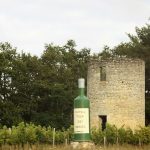
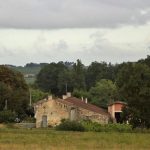


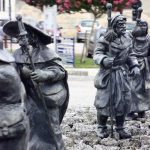




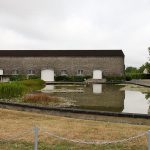
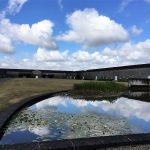
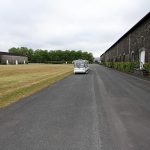

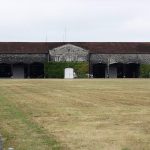

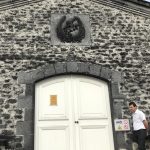

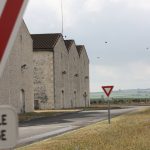


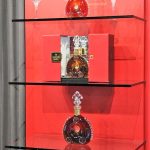


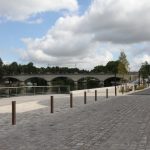

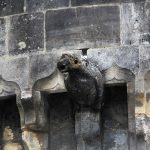







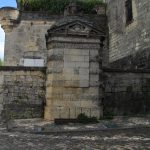


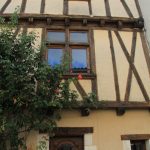

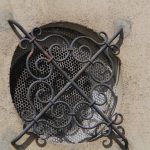
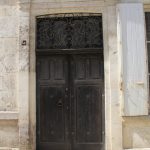




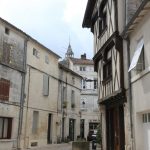


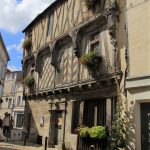






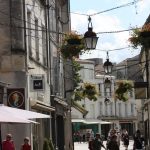


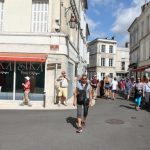


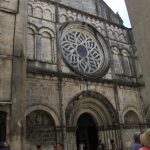



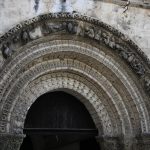


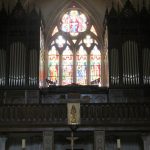
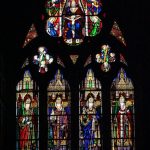


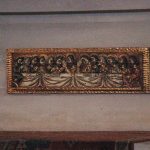

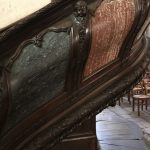
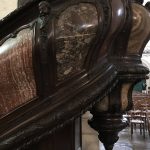
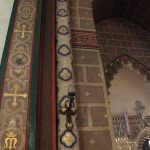




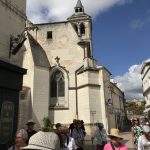

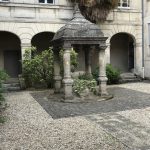
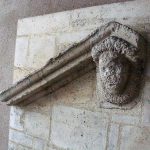



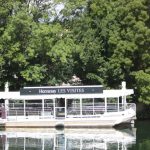



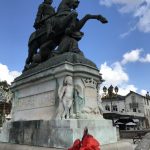







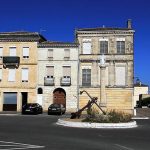
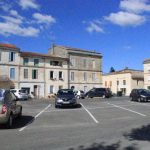

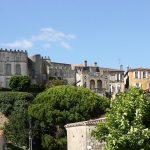
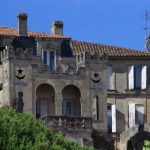



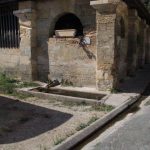
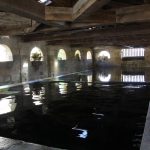

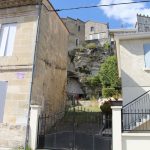
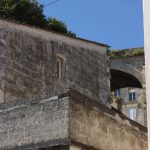


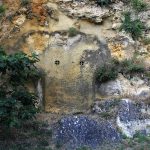




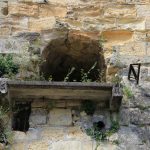

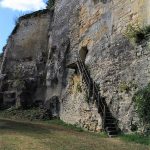




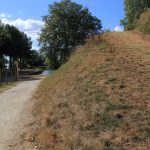


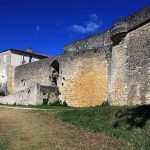


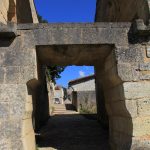




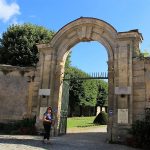
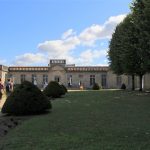

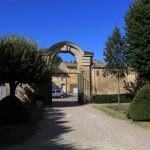


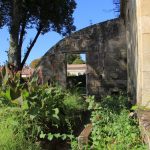
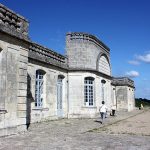
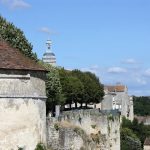
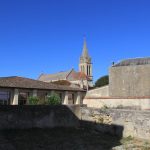


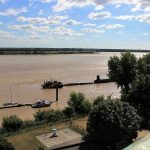

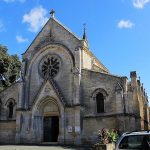
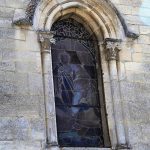
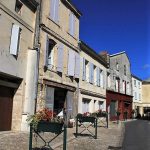
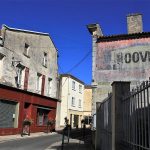

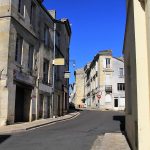

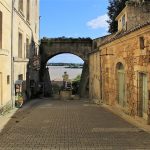
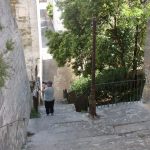




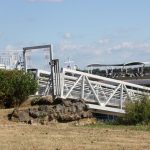
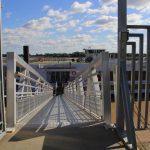




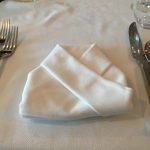
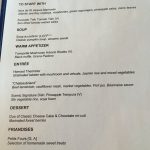


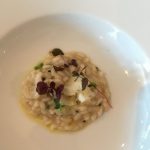

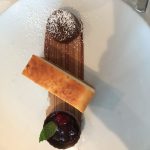
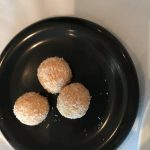
This detailed account of August 14 for Bourg and Cognac is really good, and I learned a lot by reading this account today. I hope that more blog posts like this will be published on this website soon.
Thanks for the comment, hopefully I can head back to Europe in the future.